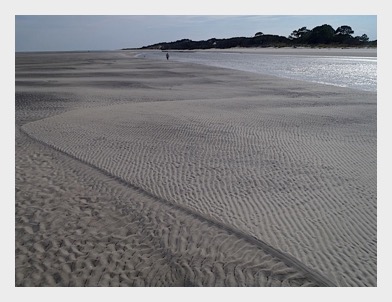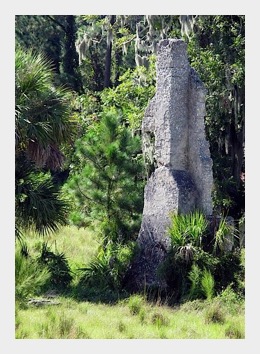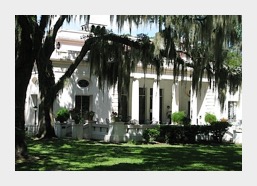Sapelo Island, GA
Sept 20-23, 2013
Sapelo Island is one of the Georgia coastal islands, part of a chain of islands that extends from Wilmington, NC to Jacksonville, FL designated in 2006 the “Gullah/Geechee Corridor” by Congress. It’s a fascinating area culturally and historically. Gullah is still spoken by some residents of the islands, and linguists continue to debate whether Gullah is a separate language or a dialect of English. Traditional crafts are still cultivated on the islands, the weaving of baskets from native grasses is a prominent example.
There are, in 2013, forty-seven full-time residents on Sapelo, most descendants of the slaves who worked the Swarbreck, later Spalding, plantation, “Chocolate,” in the 19th century. “Chocolate” was derived from the Guale Indian word for the place “chuculate” and produced Carolina Gold rice, cotton, sugar cane, and indigo. The remains of the plantation can still be seen, an old barn and some tabby walls.
Sapelo is also the home to the University of Georgia Marine Research Center.
RJ Reynolds, the tobacco magnate was the last private owner of Sapelo. The Reynolds’ summer home is still standing and is run as a boutique hotel. (Reynolds was not the only robber baron to own one of the islands in this chain. Ossabaw, which I have also visited, was owned at one time by the Wanamakers, of the Philadelphia department store.)
My outdoors group visits Sapelo at least once a year. I’ve always wanted to go, but for one reason or another, it has never worked out. This year, the stars aligned. I joined 23 fellow members of WNG for a long weekend.
Sapelo is only accessible by boat. On Friday afternoon, my group rendezvoused at the Sapelo Visitor’s Center to make the trip over by ferry, then by school bus to our campsite. For an island with only 47 full-time residents, Sapelo has more school buses than I’ve ever seen, perhaps because not all of them are completely reliable. It’s always handy to have a spare.

Our campground was, technically, not on Sapelo, but on a tiny island separated from Sapelo by an estuary, Cabretta. Though I’m not ready to do as some of my WNG compeers have done and head off with everything I need for days on trail in a backpack, certainly not ready to, as a couple of my Sapelo camp mates have done, spend months hiking the entire Appalachian Trail, I’ve discovered I have become a bit of a campground snob. Though our campground was classified as “primitive” by the Georgia Department of Natural Resources, we had hot showers, flush toilets, an outdoor sink with running water in which to wash dishes, and there was an ice machine from which, twice a day, we were able to refresh our coolers. “Primitive” I’m going to reserve to campgrounds where you wash your dishes and yourself in the creek or river or swamp, maybe using a solar shower for yourself, and you just have to make certain your food stuffs will survive questionable refrigeration. I will allow that the “latrine” be pre-dug, even that it be contained in a “closet.” The only things primitive about our site on Cabretta were that we were tent camping and cooking on camp stoves of various sorts, though even the technologies for tents and camp stoves have come a long, long way since I was a Boy Scout learning to poach in egg in half an orange peel over an open fire and to clean our cooking gear with sand and Spanish moss. (My first troop was in Florida.)
In our two-plus days on Sapelo, we had mostly beautiful weather--some rain on Saturday night and on Sunday--and we spent time hiking the nearby beach, swimming in the Atlantic, hiking around the island, swapping yarns and jokes around the campfire, and cooking and sharing food.
Our departure Monday was under gray skies and fitful spits and starts of rain. We stopped in nearby Darien, GA for lunch, some of the freshest, most delicious fried shrimp I’ve ever had. Some guys picked up some shrimp just off the boats to take home at $2/pound!! If I lived anywhere near, I’d weigh 500 pounds.
Click here for the complete photo album for the Sapelo trip. To view images in larger format as a slide show, double-click the first image, then use the navigation arrows on the upper left of the screen to move through the rest of the album.




